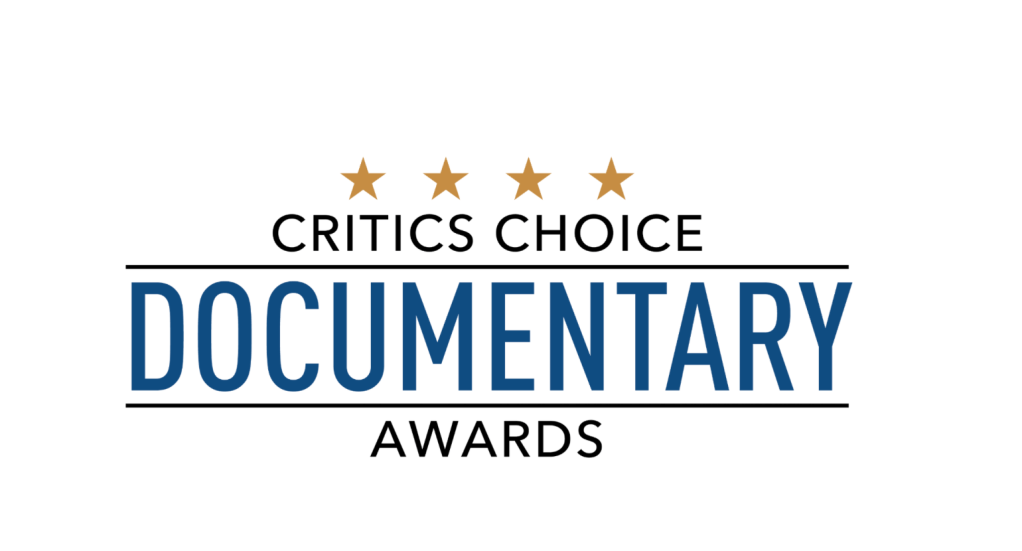by Julia Pierrepont III
LOS ANGELES, Nov. 9 (Xinhua) — “MONUMENTS,” the ongoing exhibition at the Geffen Contemporary at the Museum of Contemporary Art (MOCA) in Los Angeles, has drawn much attention and sparked public debate over the…
by Julia Pierrepont III
LOS ANGELES, Nov. 9 (Xinhua) — “MONUMENTS,” the ongoing exhibition at the Geffen Contemporary at the Museum of Contemporary Art (MOCA) in Los Angeles, has drawn much attention and sparked public debate over the…

As the Middle East markets navigate a dynamic landscape, Abu Dhabi’s benchmark index has shown resilience with recent gains, while Dubai’s index edges up amid cautious global sentiment. In this environment, identifying promising stocks often involves looking for companies that demonstrate robust financial health and strategic positioning to capitalize on regional economic trends.
|
Name |
Debt To Equity |
Revenue Growth |
Earnings Growth |
Health Rating |
|---|---|---|---|---|
|
Mendelson Infrastructures & Industries |
23.85% |
5.17% |
7.38% |
★★★★★★ |
|
Al Wathba National Insurance Company PJSC |
10.97% |
10.37% |
3.14% |
★★★★★★ |
|
Baazeem Trading |
8.48% |
-1.74% |
-2.37% |
★★★★★★ |
|
Analyst I.M.S. Investment Management Services |
NA |
29.00% |
42.23% |
★★★★★★ |
|
Saudi Azm for Communication and Information Technology |
3.26% |
17.17% |
23.30% |
★★★★★★ |
|
Najran Cement |
14.76% |
-3.67% |
-26.79% |
★★★★★★ |
|
Y.D. More Investments |
50.84% |
28.28% |
35.02% |
★★★★★☆ |
|
Sönmez Filament Sentetik Iplik ve Elyaf Sanayi |
NA |
55.06% |
42.78% |
★★★★★☆ |
|
Rotshtein Realestate |
142.50% |
22.29% |
13.79% |
★★★★☆☆ |
|
Amir Marketing and Investments in Agriculture |
25.54% |
4.63% |
6.37% |
★★★★☆☆ |
Click here to see the full list of 206 stocks from our Middle Eastern Undiscovered Gems With Strong Fundamentals screener.
We’re going to check out a few of the best picks from our screener tool.
Simply Wall St Value Rating: ★★★★☆☆
Overview: Katilimevim Tasarruf Finansman Anonim Sirketi operates in Turkey, offering savings finance solutions for purchasing houses and cars, with a market capitalization of TRY30.47 billion.
Operations: Katilimevim generates revenue primarily from its financial services in the consumer segment, totaling TRY8.95 billion. The company’s net profit margin is 15%, reflecting its efficiency in converting revenue into actual profit.
Katilimevim Tasarruf Finansman Anonim Sirketi has been turning heads with its remarkable earnings growth of 210.7% over the past year, outpacing the Consumer Finance industry’s 9.8%. The company’s net income for Q2 soared to TRY 1,710.73 million from TRY 26 million a year ago, showcasing substantial profitability improvements. Despite high share price volatility recently, KTLEV’s Price-To-Earnings ratio of 7.2x suggests it is undervalued compared to the TR market average of 21.3x. With more cash than total debt and inclusion in the S&P Global BMI Index, KTLEV seems poised for continued attention in financial circles.

The ancient practice of Tai Chi has been found to unlock remarkable changes in the brain after only eight weeks. The consistency of improvements in memory, focus, mental flexibility, and even the structure of the brain has been observed. Tai…

By Linda Pearce
When World Netball introduced a dedicated Africa-focused role back…
The mistrial was confirmed by William Fick, a lawyer for Anton Peraire-Bueno at Fick & Marx [File]
| Photo Credit: REUTERS
A federal judge on Friday declared a mistrial in the case of two Massachusetts Institute of Technology-educated brothers charged with carrying out a novel scheme to steal $25 million worth of cryptocurrency in 12 seconds that prosecutors said exploited the Ethereum blockchain’s integrity.
U.S. District Judge Jessica Clarke in Manhattan sent jurors home after they were unable to reach agreement on whether to convict or acquit Anton Peraire-Bueno and James Peraire-Bueno of charges that they carried out a first-of-its-kind wire fraud and money laundering scheme.
The mistrial was confirmed by William Fick, a lawyer for Anton Peraire-Bueno at Fick & Marx. A spokesperson for Manhattan U.S. Attorney Jay Clayton did not respond to a request for comment.
Both brothers attended Cambridge, Massachusetts-based MIT, where prosecutors say they studied computer science and developed the skills they relied on for their trading strategy.
They were indicted in May 2024, before U.S. President Donald Trump’s administration came into office, ushering in a new, crypto-friendly approach to enforcement. Despite the shift in priorities, the case against the brothers proceeded to trial.
Assistant U.S. Attorney Ryan Nees in his opening statement on October 15 accused the brothers of carrying out a “high-speed bait-and-switch” designed to lure trading bots into a trap and drain the accounts of other cryptocurrency traders.
Prosecutors said that for months, the Peraire-Bueno brothers plotted to manipulate and tamper with the protocols used to validate transactions for inclusion on the Ethereum blockchain, a public ledger that records each cryptocurrency transaction.
They did so by exploiting a vulnerability in the code of software called MEV-boost that is used by most Ethereum network “validators,” who are responsible for checking that new transactions are valid before they are added to the blockchain, prosecutors said.
“Then they planted a trade that looked like one thing from the outside, but was secretly something else,” Nees told jurors in his opening statement. “Then, just as the defendants planned, the victims took the bait.”
Katherine Trefz, a lawyer for James Peraire-Bueno at Williams & Connolly, countered that the trading strategy they executed was not just novel but legitimate and “consistent with the principles at play in this very competitive trading environment.”
Published – November 10, 2025 08:59 am IST

Oppo Reno 15 series will be launched in China next week, the company announced on Monday. The upcoming lineup is expected to comprise three models — Oppo Reno 15, Reno 15 Pro, and a new Reno 15 Mini variant. The standard Reno 15 and Reno 15 Pro…

The Critics Choice Association unveiled the winners of its 10th annual Critics Choice Documentary Awards. The Perfect Neighbor, Netflix’s documentary about the deadly consequence’s of Florida’s stand-your-ground laws, nabbed five awards…

Thailand’s position as a manufacturing and logistics hub makes customs management a central factor in investment and supply-chain decisions. In 2024, Thailand recorded US$300.53 billion in exports and US$306.81 billion in imports, reflecting its high trade integration within global supply networks. For foreign companies, the ability to align free trade agreements (FTAs), tariff classification, and duty recovery mechanisms determines not only compliance efficiency but also margin stability.
Related Reading
These instruments operate best when used together as a single cost-management system. By integrating them within a coordinated framework, companies can achieve both regulatory certainty and predictable landed costs in Thailand’s trade environment.
Thailand’s customs framework operates under the Customs Act B.E. 2560 (2017), administered by the Thai Customs Department under the supervision of the Ministry of Commerce. The Act modernized valuation, classification, and post-clearance audit procedures, replacing the 1926 law.
Digital reforms such as the National Single Window and the electronic certificate of origin (e-CO) platform have accelerated customs processes and improved traceability. These systems enable businesses to integrate trade documentation with enterprise resource planning tools and monitor import and export flows in real time.
Thailand participates in ASEAN, the Regional Comprehensive Economic Partnership (RCEP), and bilateral trade agreements with Japan, China, Australia, and India. Each framework offers different tariff concessions and documentation requirements, making the choice of mechanism dependent on a company’s sourcing model and compliance capability.
Effective duty planning begins with precise product classification under the ASEAN Harmonized Tariff Nomenclature (AHTN 2022), which determines base duty rates, licensing requirements, and eligibility for preferential treatment. Where uncertainty exists, importers may request a binding tariff classification ruling from Thai Customs before importation to ensure certainty and avoid reassessment.
Preferential tariff rates apply when goods meet the rules of origin (ROO) established under an FTA and are accompanied by a certificate of origin, such as Form D under ASEAN or Form AJ under ASEAN–Japan. Rules of origin vary by product and agreement, covering criteria such as regional value content or change in tariff heading. Businesses should apply the specific product rule rather than rely on generic thresholds.
When production relies heavily on regional inputs, FTA use can reduce or remove tariffs with manageable documentation requirements. When supply chains depend on global sourcing or record-keeping is inconsistent, paying the Most Favored Nation (MFN) rate may be safer to avoid post-clearance reassessment.
Find Business Support

Under the 2017 Customs Act, misclassification or unsupported origin claims can attract penalties of up to four times the unpaid duty and possible seizure of goods. For firms with regular shipments, linking HS codes and FTA eligibility within automated systems helps maintain compliance and capture savings sustainably.
Thailand allows duty drawback for imported inputs used in export production under Section 19 bis of the Customs Act, administered by the Duty Drawback and Compensation Division. To qualify, companies must demonstrate a traceable link between import entries, production records, and export documentation. Claims must be submitted within prescribed timelines, and refunds are issued once Customs verification is complete.
Where liquidity or mixed domestic and export sales are key concerns, free zones and bonded warehouses permit duty suspension until goods enter the domestic market. These facilities fall under Thai Customs supervision and, in some cases, align with Board of Investment (BOI) or industrial-estate programs.
The choice between refund and suspension depends on a firm’s export ratio, documentation discipline, and cash-flow needs. Export-heavy manufacturers often gain more from duty drawback, while regional distributors may benefit from deferred-duty schemes. Firms should evaluate refund lead times and administrative costs against deferred-payment advantages using their internal production and logistics data.
Manufacturers with investment promotion can combine preferential tariffs with drawback mechanisms where exported goods meet both BOI and Customs requirements. Importers and distributors outside the BOI regime should maintain strict classification governance and complete origin records to minimize audit exposure under Thailand’s risk-based inspection system.
Find Business Support

For multinational enterprises using Thailand as a regional logistics base, Free Zone and Bonded Warehouse structures offer the flexibility to consolidate imports, defer duties, and re-export throughout ASEAN. In 2024, total U.S.–Thailand goods trade reached US$81.2 billion, reflecting the strategic scale of Thailand’s role as a regional manufacturing and re-export hub. The most efficient customs configuration depends on a combined assessment of landed cost, refund timing, audit risk, and administrative capacity.
Properly designed, customs management functions as a form of operational governance, aligning compliance with financial control.
Customs compliance in Thailand demands continuous oversight. Annual reviews of tariff classifications, verification of rules of origin, and ongoing updates to internal systems are necessary as trade agreements evolve. Maintaining complete digital archives of import, origin, and refund documentation enables a rapid response to audit inquiries. Cooperation with licensed Thai customs brokers and trade advisors supports accuracy in submissions and ensures alignment with current procedures.
Proactive governance preserves transparency with authorities and enables foreign investors to sustain predictable cost structures as Thailand’s trade environment continues to evolve under regional integration. Effective customs governance ultimately protects both compliance integrity and profit margins.
About Us
ASEAN Briefing is one of five regional publications under the Asia Briefing brand. It is supported by Dezan Shira & Associates, a pan-Asia, multi-disciplinary professional services firm that assists foreign investors throughout Asia, including through offices in Jakarta, Indonesia; Singapore; Hanoi, Ho Chi Minh City, and Da Nang in Vietnam; and Kuala Lumpur in Malaysia. Dezan Shira & Associates also maintains offices or has alliance partners assisting foreign investors in China, Hong Kong SAR, Mongolia, Dubai (UAE), Japan, South Korea, Nepal, The Philippines, Sri Lanka, Thailand, Italy, Germany, Bangladesh, Australia, United States, and United Kingdom and Ireland.
For a complimentary subscription to ASEAN Briefing’s content products, please click here. For support with establishing a business in ASEAN or for assistance in analyzing and entering markets, please contact the firm at asean@dezshira.com or visit our website at www.dezshira.com.

Lenny Wilkens delivers silky smooth play from the point, all the way into the Hall of Fame.
Lenny Wilkens was honored with a statue four months ago in Seattle, outside Climate Pledge Arena, the ultimate salute to basketball greatness, in a…
“The current administration is…